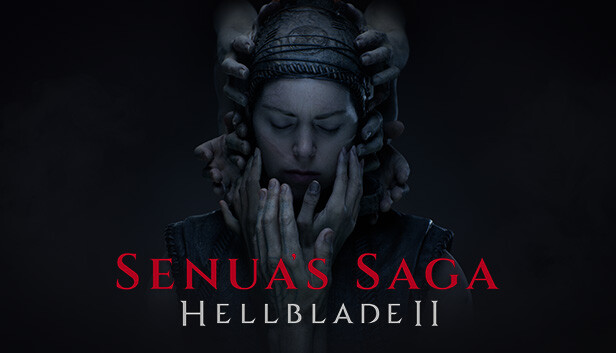Breaking News


Popular News



Unveiling the thrilling success of “Hellblade: Senua’s Sacrifice” offers readers a deep dive into the meticulous budget management behind the award-winning game. By examining the Hellblade Budget, we can uncover the strategies through which the development team balanced creativity with financial prudence. From initial vision to critical acclaim, Hellblade’s journey reflects smart budgeting, innovative technology, and effective marketing. This breakdown not only highlights the title’s achievements but also provides valuable insights for developers aiming to replicate such success in the future.
Contents
Hellblade: Senua’s Sacrifice emerged from the creative minds at Ninja Theory, a studio renowned for its passion for storytelling and innovative game design. The origins of Hellblade are deeply rooted in the team’s desire to create an independent project that challenged conventional gaming paradigms.
Visionaries Behind Hellblade:
The Core Vision:
Ninja Theory envisioned Hellblade as more than just a game. They aimed to shed light on mental health issues through Senua’s story. This dual goal of entertainment and awareness influenced the Hellblade budget, ensuring funds were allocated to both game development and accurate mental health representation.
By balancing creative aspirations with a carefully managed budget, Hellblade stands as a testament to what can be achieved with a clear vision and strategic financial planning.

The success of “Hellblade: Senua’s Sacrifice” is largely attributed to the efficient management of the Hellblade Budget regarding the core team and staffing. Ninja Theory, the developers behind Hellblade, chose a lean and focused approach to their team structure.
Key Aspects of the Core Team:
Budget Allocation to Staffing:
Proper allocation of the Hellblade Budget ensured that critical roles were filled by highly skilled individuals, fostering a collaborative environment.
Comparison Table:
| Aspect | Typical AAA Game | Hellblade |
|---|---|---|
| Team Size | 100-500 people | 20 people |
| Staffing Budget | $10-$50 million | Significantly lower |
| Specialized Roles | Many | Key, essential roles |
In summary, by prioritizing the Hellblade Budget toward a smaller, select group of multi-talented staff, Ninja Theory maximized efficiency while maintaining high-quality production standards.
Understanding how Ninja Theory allocated and managed the Hellblade budget offers valuable insights into their development process. They strategically divided their resources to balance quality and efficiency. Here’s a breakdown of the primary budget allocation:
Development Costs: The majority of the Hellblade budget went into game development. This included salaries for the core team, outsourced talent, and necessary equipment.
technology Investment: A significant portion of the budget was dedicated to advanced technology and software tools essential for creating Hellblade’s high-quality visuals and immersive gameplay.
Marketing and Promotion: Despite a smaller budget compared to AAA games, Ninja Theory allocated funds for targeted marketing campaigns. They focused on digital marketing, social media, and pre-release demos to generate buzz.
Licensing and Legal Fees: Allocation for licensing software, securing intellectual property rights, and meeting legal requirements was also a critical component of the budget.
Ninja Theory’s astute budget management enabled Hellblade to achieve high production values without the financial backing of a large publisher. Their approach demonstrates that meticulous planning and efficient resource utilization can lead to remarkable success in game development.
The success of Hellblade: Senua’s Sacrifice can be largely attributed to the smart allocation of the Hellblade budget towards cutting-edge technology and advanced tools. To achieve their vision, Ninja Theory employed a combination of industry-standard software and custom solutions.
Key Technologies and Tools:
By strategically investing the Hellblade budget in these technologies, Ninja Theory managed to produce a high-quality game without inflating costs. Understanding which tools to deploy at what stage was crucial for maintaining efficiency and achieving excellence.

Understanding how Ninja Theory approached the marketing of Hellblade is crucial to comprehending the overall success of the game. Hellblade Budget management extended significantly into the marketing segment, ensuring the game reached its target audience effectively. Here’s a breakdown of key marketing strategies and costs:
| Strategy | Cost-effectiveness | Reach |
|---|---|---|
| Digital Campaigns | High | Global through social media |
| Developer Diaries | High | Dedicated gaming community |
| Community Engagement | High | Direct feedback loop with players |
| Press Coverage | Medium | Targeted gaming audience |
| Events and Conventions | Medium | High visibility among industry peers |
By focusing on these cost-effective yet impactful strategies, Ninja Theory ensured the Hellblade Budget for marketing remained optimized, contributing to the game’s thrilling success.
Hellblade: Senua’s Sacrifice has achieved remarkable critical and commercial success, captivating both gamers and critics alike. Despite its relatively modest budget, the game managed to deliver a rich, immersive experience that stood out in a crowded marketplace.
Some of the aspects that gained Hellblade critical recognition include:
In terms of commercial success, Hellblade exceeded expectations:
| Metrics | Outcome |
|---|---|
| Sales Figures | Over 1 million copies sold within the first year |
| Awards | Multiple awards, including BAFTAs and Game Awards |
| Return on Investment | Significant profitability despite the Hellblade Budget constraints |
The balanced Hellblade Budget allocation was key to achieving high returns without compromising quality. This proves that a well-managed budget, even if modest, can yield substantial critical and commercial rewards. Hence, Hellblade stands as a testament to the effective use of resources in game development.
Studying the Hellblade Budget reveals crucial lessons that can guide future game projects. Firstly, Ninja Theory demonstrated that a smaller budget doesn’t constrain a game’s potential. They managed this by:
Future prospects look promising for similar projects. By following Ninja Theory’s footsteps, developers can create impactful games without massive financial backing. This approach encourages:
In conclusion, the Hellblade Budget serves as a blueprint for game development, emphasizing the importance of creativity and strategic planning over sheer financial power.

Hellblade: Senua’s Sacrifice had a modest budget compared to many AAA games, reported to be around $10 million. The developers, Ninja Theory, adopted an independent approach, which allowed them to reduce costs significantly while maintaining high quality.
Hellblade’s development team utilized the Unreal Engine 4, an advanced game engine known for its powerful rendering capabilities. By focusing on efficiency and leveraging cutting-edge technology, the team was able to deliver stunning visuals without the need for a large financial investment.
Ninja Theory employed several cost-saving strategies, including a smaller development team and a shorter development cycle. Additionally, they adopted a direct-to-consumer digital distribution model, eliminating the need for costly physical production and distribution.
Hellblade: Senua’s Sacrifice was a commercial and critical success. It sold over 1 million copies within its first year and received numerous awards for its narrative, design, and performance. The game’s success has been attributed to its engaging story, high-quality production, and innovative development approach.